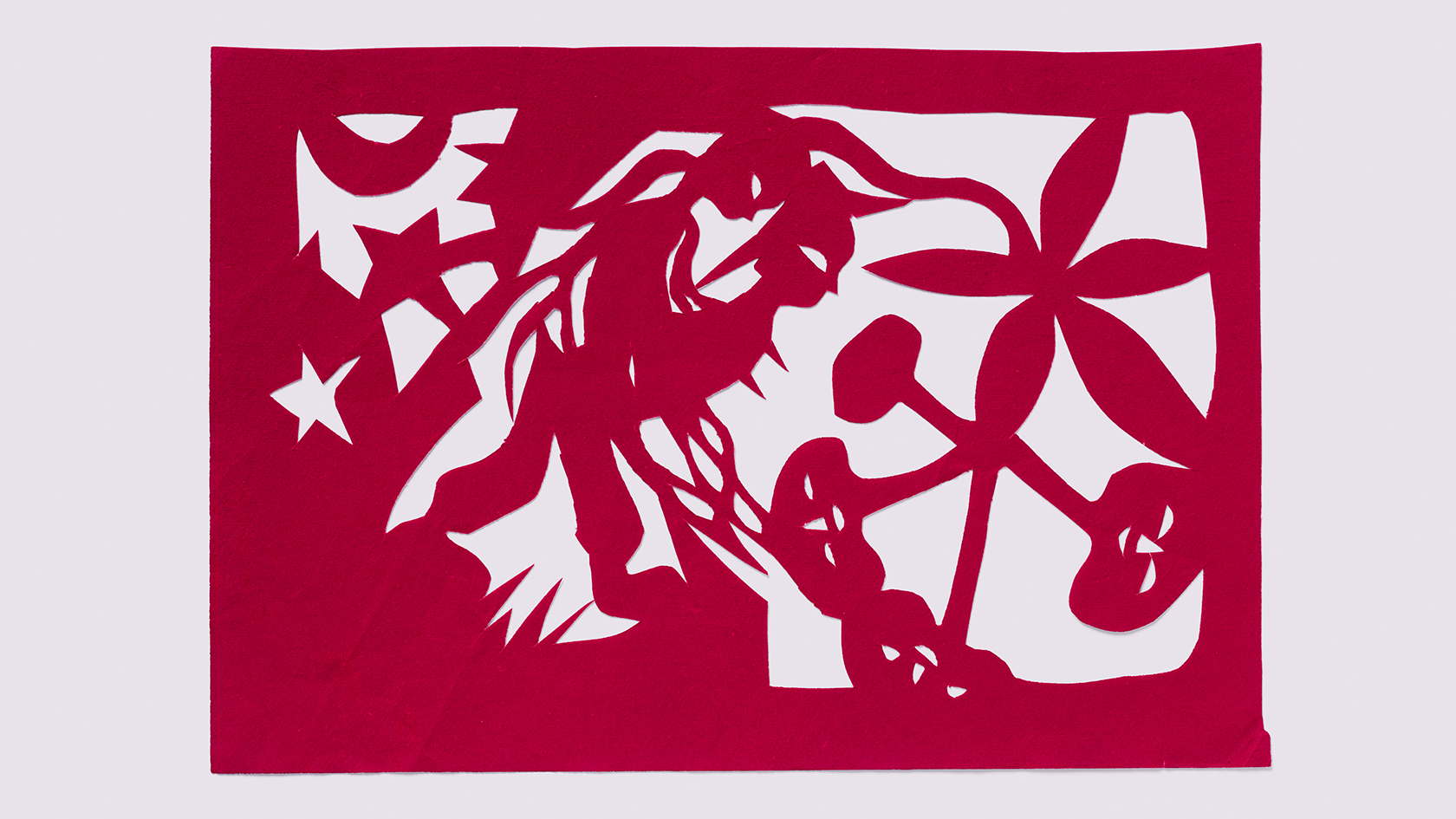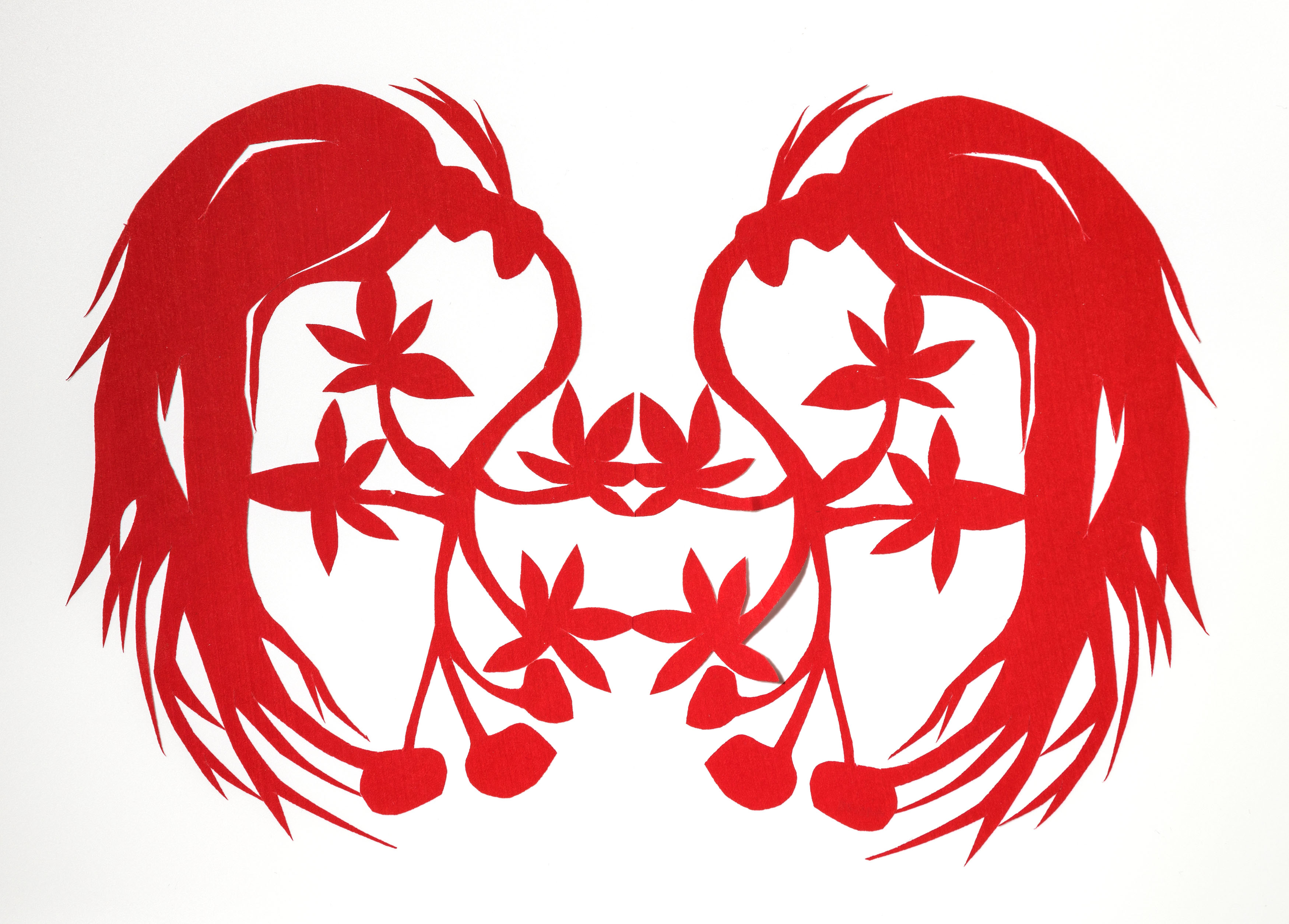Navigation auf uzh.ch
Navigation auf uzh.ch

The ginseng that grows hidden in the mountainous areas of Northeast China has been cherished for its healing powers since the 17th century. People from poverty-stricken areas of China hoped to attain wealth by finding the treasured root in the wilderness. Their quest was associated with risks, rituals and specific techniques. Ginseng foragers – exclusively men – thus used a secret jargon, special tools and hand grips to find and harvest the plant.
Their arduous and often fruitless quests and their peculiar encounters in the secluded mountains created ideal fertile soil for the spinning of tales. One recurring theme in them is dreaming of ginseng. The region surrounding the Changbai mountain range in Northeast China continues to identify strongly with those stories even though ginseng is grown on plantations these days.
The Manchurian artist Hou Yumei, born in 1952, records the tales and dreams of the ginseng foragers in papercuts and binds them into ornate storybooks that deal with themes that are still topical in the 21st century: honesty and betrayal, bravery, temperance and respectful handling of natural resources.
The 72-year-old papercut artist took up scissors as a young girl. Her brother initially composed the story texts, but later Hou Yumei emancipated herself and developed her own style against the backdrop of the 1990s, at a time when television supplanted oral folk storytelling in China. To document the vanishing tradition, the government of China and cultural institutions granted funding to folk artists spanning a diverse range of genres. Hou Yumei gained recognition as a master of the art of paper cutting, earning invitations and accolades in and outside China. Today she lives in San Francisco, where she designs papercut decorations and parade figurines for the Chinese New Year celebrations in the city’s Chinatown district – always freehand without any prior sketching. Two large-scale papercuts of her creation adorn the San Francisco subway’s Chinatown station.
The works of Hou Yumei found their way to Switzerland thanks to Mareile Flitsch, the director of the Ethnographic Museum. She researched the knowledge of wild ginseng foragers in China in the 1980s and, in the process, encountered Hou Yumei, a woman who delved into the same narratives from a completely different perspective. “The unconventional, expressive papercuts riveted me at first sight,” Flitsch recalls. “All of the lore that I compiled during my research had already been recorded in paper cutouts by Hou Yumei.” Flitsch was able to acquire some of the artist’s early works. She brought them to the University of Zurich when she was appointed professor here in 2008, and they have been conserved in the permanent collection of the Ethnographic Museum ever since then.
In the exhibition that now presents those works to the public, visitors immerse themselves in a red-and-white world in which they can leaf through the digitalized storybooks and can apprehend the effect of the artworks in detail through three greatly enlarged papercuts and listen to ginseng tales from different epochs. The exhibition also provides background information about the historical and cultural significance of ginseng foraging in Northeast China.
“Dreaming of Ginseng” is Mareile Flitsch’s farewell exhibition at the Ethnographic Museum at the University of Zurich; she will be conferred Professor Emeritus in January 2025. In conjunction with her retirement, she has donated numerous other works by Hou Yumei to the museum from her private collection. In conversation and through paper-cutting demonstrations, visitors can directly experience how the works come into being. And if they would like to try their own hand at paper cutting, it goes without saying that pattern templates, scissors and plenty of red paper await them at the exhibition.
